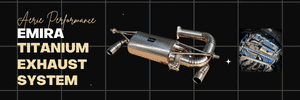Ok so this tip-in enrichment thing and pull-off enleanment... what the heck is that. I'll explain those, which may help.
The base fuel map in any car is designed around the state of fuel demand for a given amount of airflow at a given RPM, which is a known volumetric quantity when the air is flowing at the normal rate associated with a given RPM and throttle position. But there are conditions that can deviate really significantly from that base map's airflow assumptions in transitory moments, because air is a compressible fluid, and fluids do weird things based on their pressure and inertia when they aren't in a steady-state flow condition.
When you very rapidly open the throttle, the base fuel map goes to a very different position in the table and calls for a bunch of new fuel values. But the air that's suddenly allowed to move into the intake plenum and combustion chamber has *inertia* and doesn't change velocity instantaneously. So the fuel map says "give me more fuel" but the air hasn't gotten there yet, so the charge naturally would go very very rich for a split second before the air velocity catches up and matches the fuel delivery. That's what is called "tip-in enrichment". The tip-in enrichment correction factor is designed to apply a negative fueling trim to the call for fuel during moments when the rate of change (opening) of the throttle position is very high. This correction tends to be a bit heavy-handed, because the environmental regs are *very* opposed to unburnt fuel in the atmosphere, so the correction sometimes results in a split-second lean dip which spikes chamber temperatures slightly.
Similarly, there's a phenomenon where if you're delivering fuel and air at a higher rate, like if the car is at steady loaded cruise or accelerating, and you suddenly come off the gas, the fuel map goes to a much leaner position on the table and stops delivering so much fuel. But (and particularly on a forced-induction vehicle) the pressure and inertia of the air in the intake plenum is still at the higher state, and naturally causes an even leaner condition than expected for a moment due to more air present than fuel to match it. That's "pull-off enleanment". So the pull-off enleanment correction factor adds positive trim to the call for fuel, and richens the mixture momentarily until the air flow and pressure normalize. This is less heavy handed usually than the other correction, because they aren't trying to brick-wall the values against an emissions test failure, but at the same time the conditions when you really need pull-off enleanment correction typically involve a lot more load, heat, and knock/det risk. So they add an amount of fuel for increased safety, over a slightly longer duration than the other correction.
In a case like what you're describing, where a double tap makes a backfire, you've triggered the first case, then the second case, and then the first case again. So it's a rich mix condition that's being hard-corrected lean, then an overshot lean-mix correction that's being corrected rich, and then the second blip cranks a double-rich error mix that's sort of the sum of the enleanment correction and the new tip-in enrichment state, which makes a puff of unburnt fuel that carries through into the exhaust manifold. The tip-in enrichment correction has at the same time yanked back the mix to lean again, causing the combustion chamber temp to spike. And when the exhaust valve opens on the next rotation, that hot charge ignites the unspent fuel that's waiting in the exhaust manifold. And you get your obnoxious bang.
At full operating temp this happens less because the base map isn't as rich for cold start safety, and more of the fuel charge gets burned over time in the hot conditions of the combustion chamber, so far less unburnt fuel ever makes it past during these rapid change events. You'll still get some, but it's burbles rather than bangs.
Direct-injected engines have better/more predictable correction consistency, since the fuel delivery isn't as dependent on airflow in the port, but they still experience the underlying physical phenomenon.
Hope this helps!







